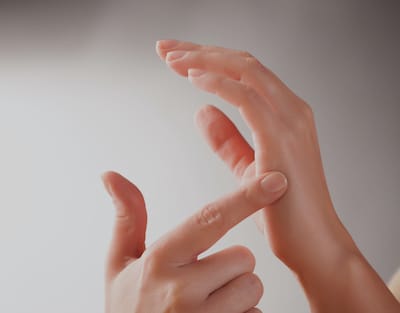By Dr. Jennifer Douglas
Dean of Graduate Studies and Research
Stress is a constant for many of us. Our daily lives are filled with deadlines at work, kids’ activities, household responsibilities and the “scroll of doom” on our phones.
Unlike our ancestors, we may not be running from a tiger or hunting our next meal for survival, but we feel as if we are. Why? Our bodies can’t tell the difference between life-or-death kinds of stress and the adrenaline that comes from reading that snarky email.
According to Harvard Medical School, when we enter the fight, flight, or freeze mode, our brains unleash a rush of adrenaline, cortisol, and other hormones. This rise in hormones decreases our critical thinking capability in our prefrontal cortex and puts us on high alert, as shown by research published in Nature Reviews Neuroscience.
Scientific American adds that this stress response impairs the functioning of the prefrontal cortex of our brains where our critical thinking capabilities lie. We literally can’t think when we’re stressed, notes Medical News Today.
This stress response made sense when our survival was at stake, as when we ran from a predator. In those situations, there’s no time for having a rational conversation about options for survival.
Now, however, the unrelenting stress of our lives can lead us into a perpetual state of fight, flight or freeze. When that stress is running in our body’s operating system, we start to see the symptoms of being on high alert all the time, says the Mayo Clinic.
Those stress symptoms include poor sleep, anxiety and depression, weight gain, and autoimmune disorders, to name a few of the most common issues. Our body begins to attack itself because of that heightened state of mental stress, and our physical, emotional, and mental health begins to suffer.
Related link: 3 Physical Activities for Reducing and Managing Your Stress
How Emotional Freedom Technique Relieves Stress
If we have stress, often unnoticed, what can we do to turn it off or change it? One way of reprogramming our body’s stress response is Emotional Freedom Technique (EFT), commonly called “tapping.”

EFT combines a physical action of tapping on specific body points, according to EFT Universe, while recalling a stressful event, emotion, or bodily sensation and reframing that event through self-acceptance. EFT is often referred to as emotional acupuncture, notes The Tapping Solution, because the tapping points on the body are on energy pathways called meridians. These tapping points are the same pathways that acupuncturists use when they are placing needles on clients.
With EFT, luckily, no needles are involved. Lightly tapping on specific points on the face and torso while recalling a negative event signals the nervous system that it’s ok to relax, according to research published in Psychological Trauma.
That technique may sound counterintuitive. After all, we’re often told to think positively and keep a stiff upper lip.
EFT works precisely because it does the opposite. It gives us the opportunity to articulate exactly what we’re stressed about while the physical tapping deprograms the fight, flight or freeze response at the same time, according to research published in the Journal of Evidence-Based Integrative Medicine. Then we reframe the event and our emotions by voicing self-acceptance rather than self-judgment.
If this approach still seems odd, the research behind it demonstrates its effectiveness, according to research published in Psychology and the Review of General Psychology. One area in which this technique has proven effective is in treating the symptoms of PTSD, notes a study published in The Permanente Journal. Many people suffer from PTSD, caused by either war experiences or from life events that were too difficult to process at the time.
Doctors working with veterans found that traditional talk therapy was not enough to help with the effects of PTSD. Simply talking about traumatic events would trigger the patient’s emotions and escalate PTSD symptoms rather than relieving them.
From that experience, several psychologists started experimenting with physical techniques involving specific breathing patterns, eye movements, and tapping on the body. If you are familiar with eye movement desensitization and reprocessing (EMDR) therapy as outlined by the EMDR Institute, then you are already familiar with the underlying mechanism of EFT. EMDR is a technique that relies on specific eye movements while a patient recalls a traumatic event.
Like the eye movements in EMDR, the tapping in EFT releases the stress associated with that event and replaces it with positive self-appreciation. The results are amazingly good, ranging from reduction in PTSD symptoms to changes in gene expression related to stress according to research published in the American Journal of Health Promotion.
A study published in Integrative Medicine: A Clinician’s Journal also notes that healthcare workers suffering from anxiety and depression reported a 45% decrease in their symptoms after two hours of EFT.
Related link: The Hazards of Hypertension: How to Lower High Blood Pressure
How to Use Emotional Freedom Technique
Another advantage of EFT is its simplicity and the growing resources for learning to tap on yourself. If you would like to try EFT, follow these steps from EFT Universe to get started:
- Think about a stressful situation or event. Notice the emotion you feel and where that emotion shows up in your body. For instance, does your throat tighten? Do you have a knot in your stomach? Do your legs feel weak?
- Give that emotion and bodily sensation intensity scores of 0-10, with 0 being “It doesn’t bother me at all!” and 10 representing “This is my maximum level of distress.” Write down your scores for the emotion and the bodily sensation you feel.
- Start tapping on the side of your hand below your little finger. It’s called the “karate chop point.”
- While tapping on the side of your hand, repeat the following statement three times with a description of your event:
- Even though I have [this event/emotion/feeling in my body], I deeply and completely accept myself.
- Now start tapping on your EFT points (refer to The Tapping Solution’s YouTube video) while repeating phrases about the upsetting event, such as:
- This [event], feeling so stressed about [this event], this knot in the pit of my stomach, feeling my heart racing, this [emotion] I feel.
- Tap around all the points while repeating these phrases through five to seven rounds of tapping.
- Stop and assess your previous scores. Are the scores still the same? Did they change?
- If your scores started to come down, you’re deprogramming and removing the stress from that event! Keep tapping until you feel the scores come down to 0.
- If your score stays the same or goes up, that’s ok, too. That means you’re allowing yourself to feel emotion that was likely under the surface. Stick with the tapping for several more rounds and see if your scores begin to drop.
If you would like to try tapping along with a guided video, there are free EFT videos available through EFT Universe and The Tapping Solution. Veterans can also receive free sessions with a trained practitioner through a nonprofit called Veterans Stress Solution.
We’re hard-wired to respond to stress by entering the fight, flight or freeze mode. When our everyday stresses overwhelm our fight, flight or freeze response, that feeling of stress can remain on all the time, creating an underlying drag on our mental and physical health.
EFT offers a way to change our feelings and deprogram the automatic stress response by calming our nervous system while we recall the negative event. Best of all, it’s easy to learn and simple to try. When you feel frazzled after a long day, take a few minutes to try EFT while recalling a stressful event of that day and feel the relief that EFT can offer.
About the Author

Dr. Jennifer Douglas has served in graduate education leadership roles since 2009 and as Dean of Graduate Studies and Research at the University since 2017. Her work supports faculty, student, and programmatic success by focusing on the quality, design, and delivery of graduate programs.
To enhance the student experience, Dr. Douglas has created professional development programs for graduate students in competencies such as teaching at the college level, mental health, communication and academic writing. She offers professional development workshops for graduate faculty in mentoring and teaching, and she chairs the Institutional Review Board. Her interests in health and wellness have led her to practice coaching methods that promote the well-being of the whole person, including fitness training and Emotional Freedom Technique.

Comments are closed.